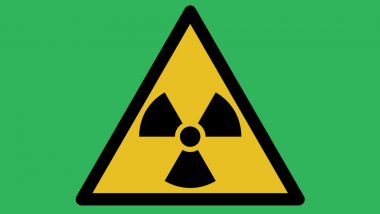In something that sounds straight out of the pages of a sci-fi book, a man cremated at a crematorium at Arizona, US caused radioactive contamination at the facility. As per media reports, the deceased had undergone lutetium 177-based radiation therapy shortly before his death. The 69-year-old had been receiving treatment for pancreatic cancer and was admitted to the hospital after suffering from abnormally low blood pressure. Sadly, he died two days later and was cremated at the Arizona facility.
Amazingly, when his corpse was cremated, the radioactive substance used to treat his tumour, was still in his body. Incinerating his remains caused the lutetium to volatilise, sending out radioactive fumes into the air. The workers at the crematorium were exposed to the radiation after they inhaled it. What is even more worrisome is that the radioactive compound was also detected in the urine of a crematorium employee. The Healing Caves of Gastein in Austria has Natural Radioactive Treatment Curing you of all Joint Pain.
According to the Agence France-Presse, Kevin Nelson, a radiation safety officer at the Mayo Clinic Arizona, learnt of the man’s death, which happened at another hospital, and subsequent cremation three weeks later.
He learnt that in the state of Arizona, there were no laws related to the cremating people treated with radioactive substances. Nelson decided to measure the radiation levels at the crematorium with the state's Bureau of radiation control.
A Geiger-Mueller counter, a device used for detecting and measuring radiation, set up in the crematorium detected trace amounts of lutetium. Urine samples taken from the facility’s operator showed that there were faint traces of another radioactive substance technetium 99, which is also used in health care facilities. How Radiation Exposure Has Been Causing Cancers In Cardiologists and Other Medical Professionals.
The crematorium worker was exposed to the radioactive compound when the remains of another patient were cremated.
The detailed report has been published in the Journal of American Medical Association by Nelson and his colleague Nathan Yu. Radiopharmaceuticals like lutetium-177 have been used for therapeutic purposes like treating cancer. According to the report, 40 million procedures are performed using radiopharmaceuticals globally.
But the risks of using these therapeutic tools are not highlighted enough, because they are unique. While safety regulation is in place for use in patients, there is no protocol for handling and disposing of corpses of patients treated with the compound.
The findings showed that the level of radiation was, in fact, “very, very small” and didn’t violate the general public limit set by the Nuclear Regulatory Commission.
Crematoriums follow strict rules before incinerating human remains, removing pacemakers, defibrillators and other medical apparatuses that may explode. But there doesn’t exist any system to address the problem of radioactive substances in corpses.
(The above story first appeared on LatestLY on Feb 27, 2019 07:14 PM IST. For more news and updates on politics, world, sports, entertainment and lifestyle, log on to our website latestly.com).












 Quickly
Quickly


